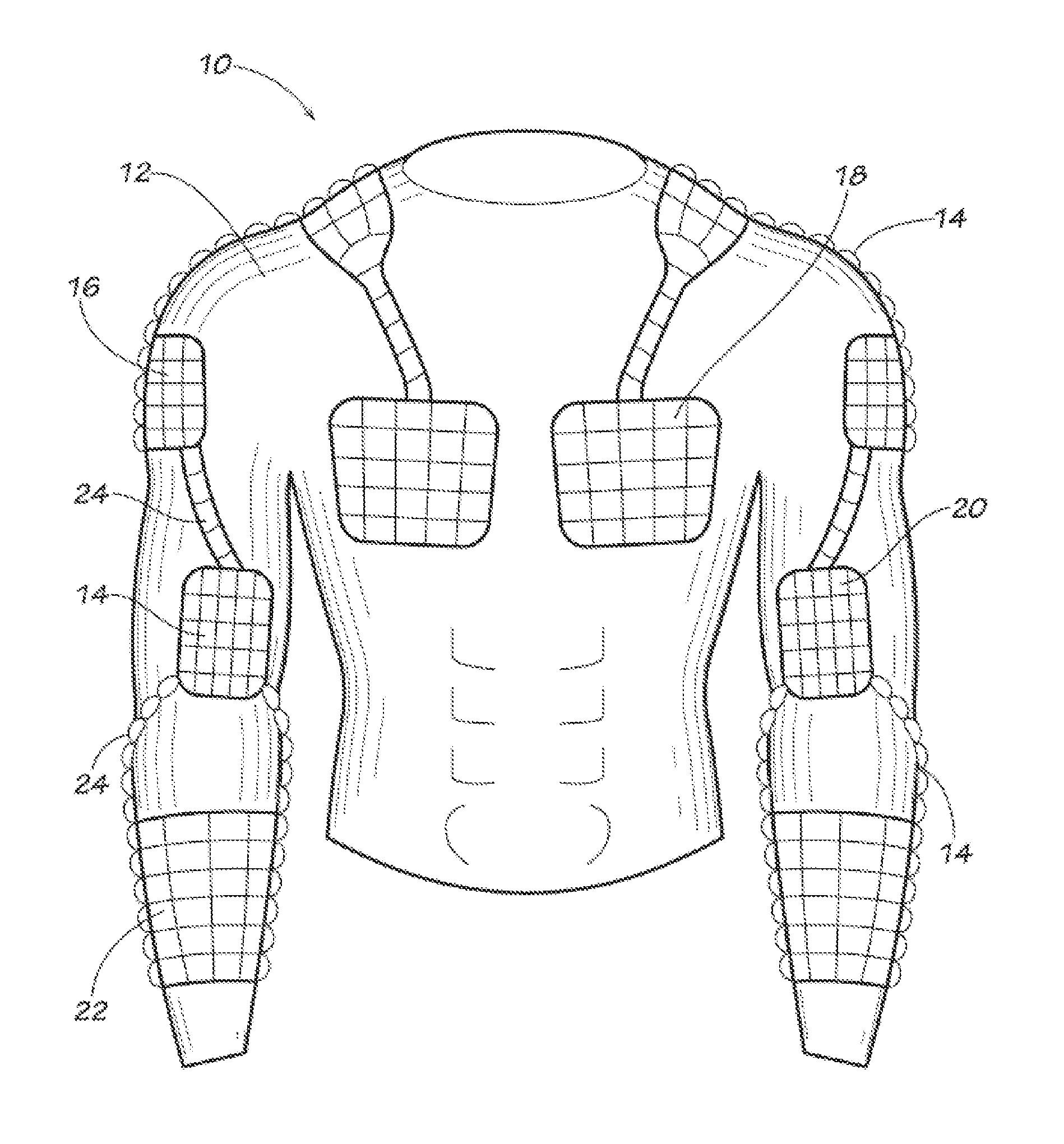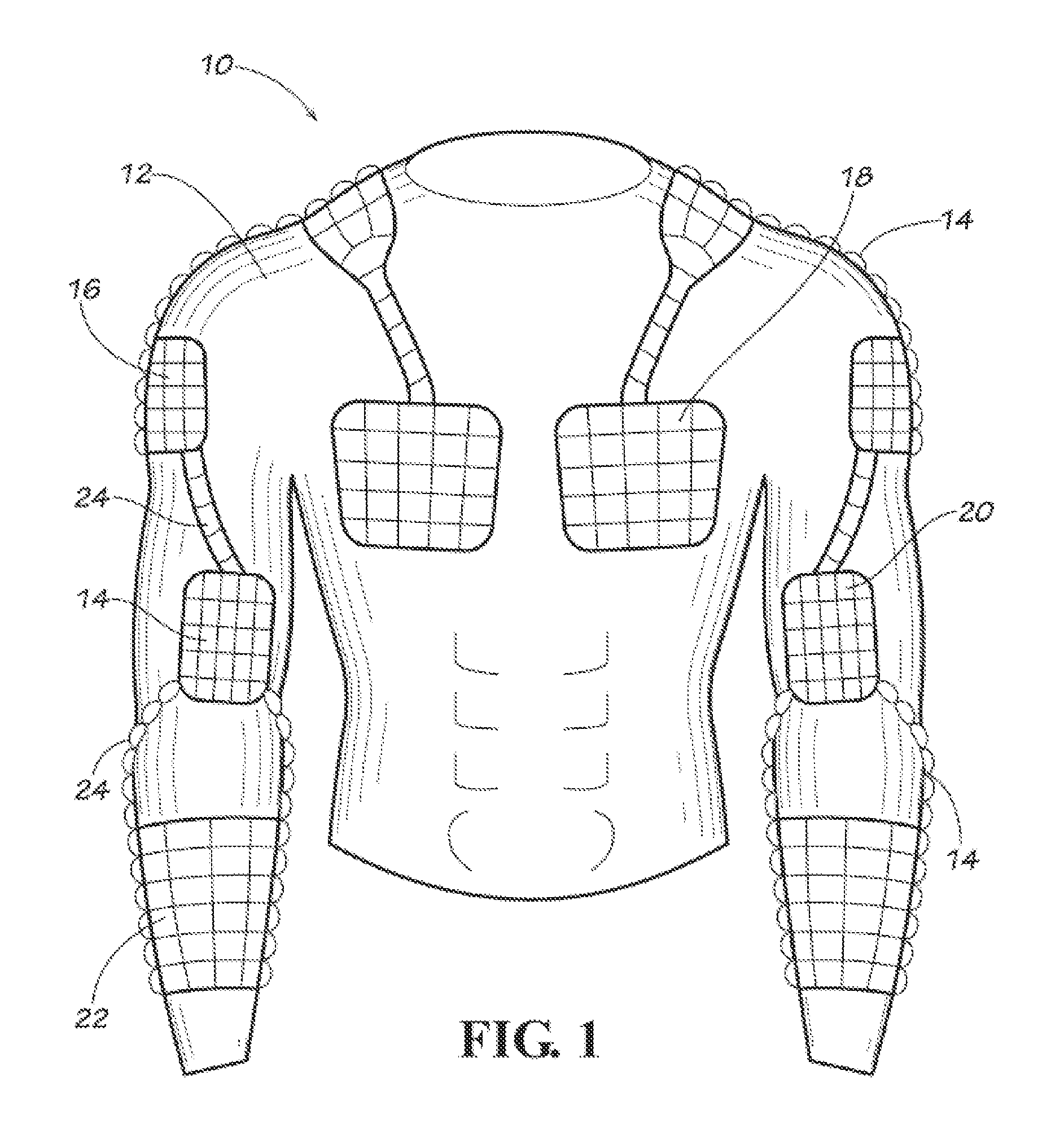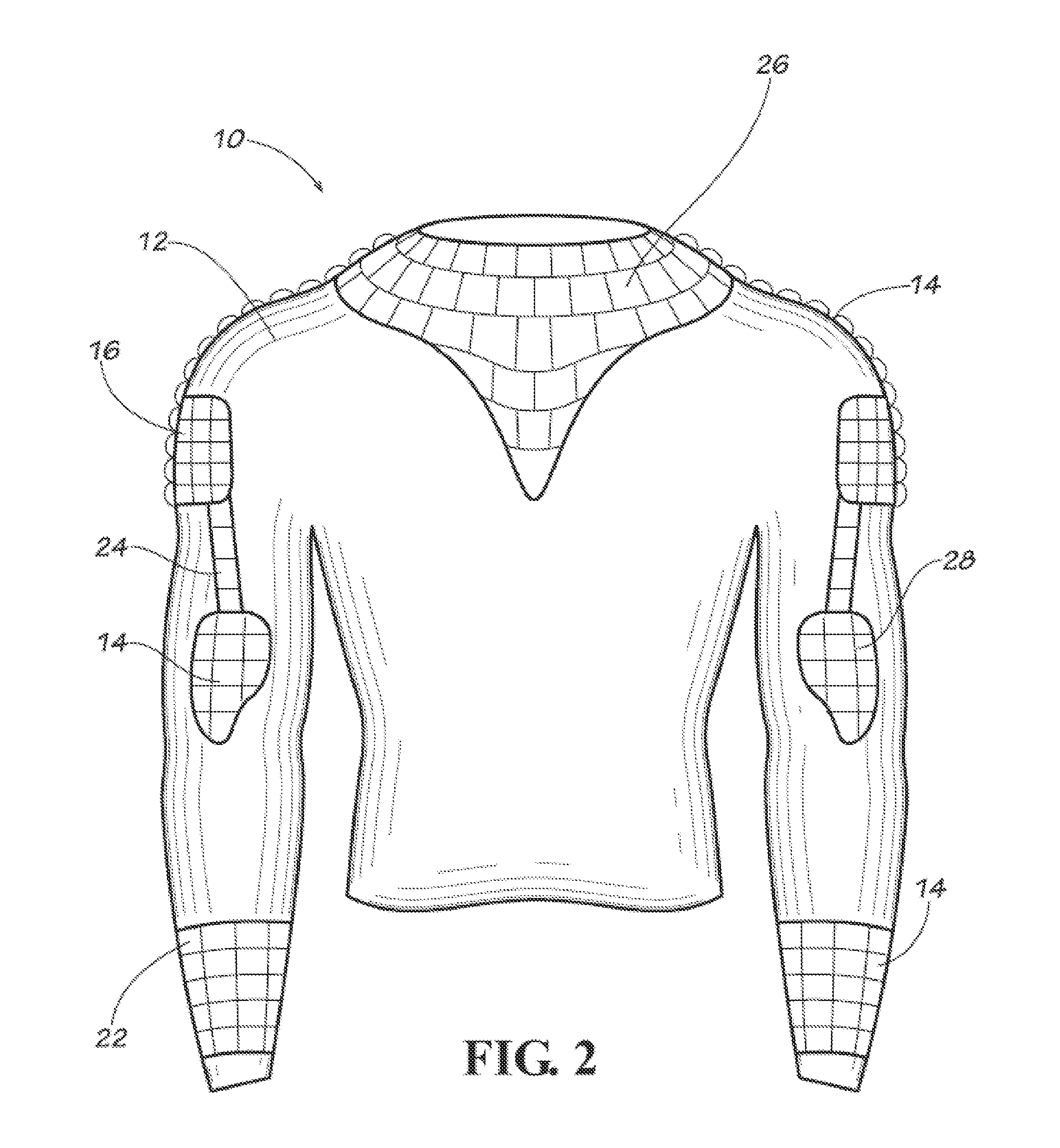Clothing Systems Having Resistance Properties
a technology of resistance and clothing, applied in the field of clothing systems, can solve the problems of not allowing the swimmer to swim naturally or complete flip turns, affecting and affecting the performance of the wearer, so as to achieve the effect of increasing the strength and stamina of the wearer's muscles
- Summary
- Abstract
- Description
- Claims
- Application Information
AI Technical Summary
Benefits of technology
Problems solved by technology
Method used
Image
Examples
first embodiment
[0043]FIG. 1 is a perspective view of the front of the invention, namely a weighted shirt 10, showing an illustrative placement and shape of the weights 14 on the front of the weighted shirt 10. The illustrative substrate shirt 12 has the shape of a common long-sleeved tee-shirt or fitted athletic shirt. Weights 14 can be strategically placed on the substrate shirt 12 such that the weights 14 are proximal to any portion of the wearer's upper torso. In the illustrative embodiment shown in FIG. 1, the weights 14 are shown attached to the front of the substrate shirt 12 as a shoulder weight cluster 16, a pectoral weight cluster 18, a bicep weight cluster 20, and a forearm weight cluster 22. The placement of the weights 14 thus corresponds to an underlying muscle group. Linking strands 24 of weights can connect the various weight clusters 16, 18, 20, 22 so as to maintain the weight clusters 16, 18, 20, 22 in place without the need for additional attachment straps. Linking strands 24 als...
second embodiment
[0046]FIG. 3 is a perspective view of the front of the invention, namely weighted pants 100, showing an illustrative placement of the weights 14 on the front of the weighted pants 100. The illustrative substrate pants 102 are a fitted short or athletic pant that extends at least partway down the wearer's thighs such that weights 14 can be strategically placed proximal to any portion of the wearer's lower torso and upper legs. Long pants (not shown) also are contemplated to provide weights 14 strategically proximal to the wearer's entire leg. In the illustrative embodiment shown in FIG. 3, the weights 14 are shown attached to the front of the substrate pants 102 as a hip weight cluster 30 and a thigh weight cluster 32. Linking strands 24 of weights can connect the various weight clusters 30, 32 so as to maintain the weight clusters 30, 32 in place and to effectuate a full-body workout without the need for additional attachment straps. Additional weight clusters can be attached to the...
third embodiment
[0049]FIG. 5 is a perspective view of the front of the invention, namely a weighted shirt 10, showing an alternative illustrative placement and shape of the weights 14 on the front of the weighted shirt 10. The illustrative substrate shirt 12 also has the shape of a common long-sleeved fitted athletic shirt, similar to that shown in FIGS. 1 and 2. Weights 14 are adhered, sewn, or attached by known means in strategic locations on the substrate shirt 12 such that the weights 14 are proximal to any portion of the wearer's upper torso. In the illustrative embodiment shown in FIG. 5, the weights 14 are shown attached to the front of the substrate shirt 12 as a trapezius weight cluster 40, a pectoral weight cluster 18, a bicep weight cluster 20, a forearm weight cluster 22, and an abdominal weight cluster 42. The placement of the weights 14 thus corresponds to an underlying muscle group. Linking strands 24 are not needed, as in the first and second illustrative embodiments, in part becaus...
PUM
 Login to View More
Login to View More Abstract
Description
Claims
Application Information
 Login to View More
Login to View More - R&D
- Intellectual Property
- Life Sciences
- Materials
- Tech Scout
- Unparalleled Data Quality
- Higher Quality Content
- 60% Fewer Hallucinations
Browse by: Latest US Patents, China's latest patents, Technical Efficacy Thesaurus, Application Domain, Technology Topic, Popular Technical Reports.
© 2025 PatSnap. All rights reserved.Legal|Privacy policy|Modern Slavery Act Transparency Statement|Sitemap|About US| Contact US: help@patsnap.com



